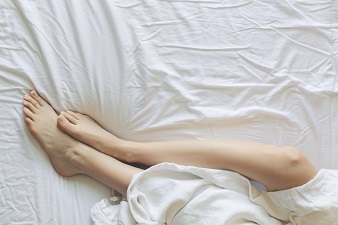Is the Endometriosis Pathogenesis Unknown? How Complicated is It?
Endometriosis mainly refers to the endometrial tissue covering the uterine cavity or appearing, growing, and infiltrating outside the uterus, leading to repeated bleeding and causing pain nodules, masses. It even leads to infertility and other conditions.

Endometriosis is one of the most common diseases in women of childbearing age, with an incidence rate of up to 10%. Moreover, the most troublesome aspect of endometriosis is not the high incidence but the complexity of its incidence. Different patients with endometriosis have relatively significant differences. It has a wide range of lesions and diverse shapes, and its pathogenesis is still challenging to clarify.
At present, regarding the pathogenesis of endometriosis, the mainstream view is menstrual blood reflux implantation. That is, menstrual blood refluxes to the endometrium of the pelvic cavity through adhesion, invasion, and vascular formation, finally "planting" and growth, causing lesions. Research has found that abnormal expression of related genes, severe immune response, or abnormal sex hormone receptors in the body are also closely associated with endometriosis.
Endometriosis also has a certain degree of family clustering. If there are patients with endometriosis in the first-degree relatives, the risk of endometriosis in women is 7-10 times higher than that of others. Therefore, if a relative has endometriosis, women must be more careful and carry out a comprehensive examination in time!

Nearly half of the patients are infertile. What other problems does endometriosis bring?
There are many endometriosis patients with infertility. According to clinical data, 40-50% of patients with endometriosis have infertility. In addition to infertility, the symptoms of endometriosis are very diverse.
Pelvic pain is the most typical manifestation of endometriosis. According to statistics, 70%-80% of patients with endometriosis will experience varying degrees of pelvic pain, including dysmenorrhea, chronic pelvic pain, intercourse pain, and anal falling pain.
Dysmenorrhea in patients with endometriosis is a little different from normal menstrual dysmenorrhea. They tend to show progressive aggravation along with the development, and sometimes menstrual abnormalities also occur. In addition to dysmenorrhea and infertility, there may also be pelvic masses. Clinical data shows that 17%-44% of patients will have this problem.
However, endometriosis invades other organs and tissues. For example, patients will have digestive tract symptoms. When endometriosis occurs, patients will experience frequent and urgent urination and painful urination.
The incidence of endometriosis is high, the pathogenesis is complicated, and it has a considerable impact on the female body. What's worse, endometriosis has a high recurrence rate. According to statistics, the annual recurrence rate of patients with endometriosis is about 5%-20%, and the 5-year cumulative recurrence rate is as high as 40%. Therefore, treating patients with endometriosis often requires long-term management according to their age group and reproductive needs.
As for the treatment of endometriosis, there are generally the following:
1. Radical treatment of endometriosis:
The so-called revolutionary treatment method removes all the ovaries and uterus on both sides. But this is not very beneficial for young women who have not given birth, and there will be related complications or menopausal syndrome after surgery. It is difficult for women to accept it both mentally and physically.
2. Conservative treatment of endometriosis:
One of the so-called conservative treatment methods is to take medicine such as Fuyan Pill to improve treatment. Fuyan Pill is made of more than 50 pure natural herbs, there are no side effects, and the recurrence rate after cure is meager. Fuyan Pill can eliminate the pathological changes of gynecological tissues, regulate menstruation, eliminate pain, etc., and treat endometritis.
The second is to remove the lesion. Women who want to preserve the uterus can choose this treatment method but decide on the condition. Some women have more severe problems. If conservative treatment methods are used, recurrence is likely to occur.
3. Laparoscopic treatment of endometriosis:
At present, laparoscopy can be used clinically to diagnose and treat. For patients, the trauma is minimal, and there is no fear. It is a more popular treatment method, and many doctors will recommend patients choose it. But there is also the possibility of recurrence, which requires careful consideration before making a decision.
Recommended Readings:
Will Endometriosis Cause Cancer? How To Prevent Endometriosis?
How is the Natural Pregnancy Chance with Endometriosis?
What is the best endometriosis treatment option?
Will Strenuous Exercise Cause Endometriosis?
previous pageHow to Relieve Pain from Endometriosis?
next page You may also be interested in
You may also be interested in- Hydrosalpinx and IVF: What Are the Chances of Successful Embryo Implantation?
- New Endometriosis Pill Approved on NHS: What This Means for Patients and the Role of Traditional Chinese Medicine
- Can Endometriosis Be Endured Until Menopause?
- Solving the Problem of 1.9 Million Women: Endometriosis Blood Test Changes the Game!
- Endometriosis: Can It Be Life-Threatening?
Testimonials
- Adenomyosis with Ureaplasma Urealyticum Cured by Fuyan Pill
- Tubal blockage with hydrosalpinx can be cured by TCM shortly
- Fuyan Pill Helps A woman with Adenomyosis Get Pregnant
- A Woman with Hydrosalpinx Is Cured with Fuyan pill
- Pelvic Inflammatory Disease Testimonials
- Irregular Vaginal Bleeding and Endometrial Thickening Cured by Fuyan Pill
- Pruritus Vulvae and Frequent Urination: Mycoplasma Infection Cured after 2 Courses




